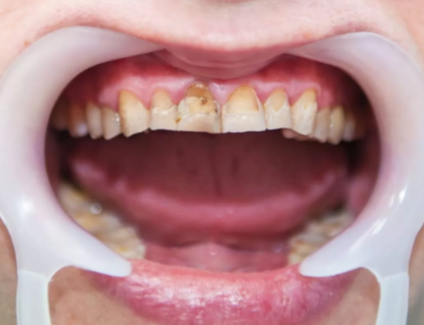All About Dental Fluorosis: Causes, Symptoms, and Prevention

Dental health is a cornerstone of overall well-being, and while fluoride has long been celebrated for its cavity-fighting benefits, excessive exposure can sometimes lead to a condition called dental fluorosis. This condition, which primarily affects children during the development of their teeth, can range from mild cosmetic issues to more noticeable changes in enamel. Understanding dental fluorosis—its causes, symptoms, and preventive measures—is essential for maintaining a healthy, confident smile.
What Is Dental Fluorosis?
Dental fluorosis is a condition that occurs when children ingest too much fluoride during the early years of tooth development, typically under the age of eight. Fluoride is a naturally occurring mineral that strengthens teeth and helps prevent cavities. However, when consumed in excessive amounts, it can disrupt the normal formation of tooth enamel, leading to changes in the appearance of teeth.
Fluorosis can manifest in different severities. Mild cases may present as faint white streaks or spots on the teeth, while moderate to severe cases can result in brown stains, pitting, or rough enamel surfaces. It’s important to note that fluorosis does not typically affect the functionality of teeth—it is mainly a cosmetic concern—but it can impact self-esteem, especially in more visible cases.
Causes of Dental Fluorosis
The primary cause of dental fluorosis is overexposure to fluoride during the critical years of tooth development. Some common sources of excessive fluoride include:
- Fluoridated Water: Many communities add fluoride to drinking water to help prevent cavities. While this is generally safe, children who consume large amounts of fluoridated water in combination with other fluoride sources may be at risk.
- Toothpaste and Mouth Rinses: Swallowing toothpaste or fluoride-containing mouth rinses can contribute to excessive fluoride intake in young children.
- Dietary Supplements: Fluoride supplements, if taken unnecessarily or in excess, can increase the risk of dental fluorosis.
- Processed Foods and Beverages: Some foods and beverages prepared with fluoridated water can add to total fluoride intake.
Symptoms of Dental Fluorosis
The appearance of dental fluorosis can vary depending on its severity:
- Mild Fluorosis: White streaks or specks on the tooth enamel. These are often subtle and may only be noticeable under specific lighting.
- Moderate Fluorosis: More extensive white patches or cloudy areas, sometimes accompanied by faint brown discoloration.
- Severe Fluorosis: Brown stains, surface irregularities, and pitting of the enamel. In rare cases, teeth may be more brittle, though they generally remain functional.
It’s important for parents to monitor their children’s teeth during early development and consult a dentist if any unusual markings or discoloration appear. Early detection helps manage the condition and prevents it from worsening.
Read also: Online Counselling Canada: Accessible Mental Health Support Across Provinces
Prevention of Dental Fluorosis
Preventing dental fluorosis revolves around managing fluoride intake carefully, particularly in children. Here are key steps parents and caregivers can take:
- Monitor Fluoride Use: For children aged 3 to 6, use only a pea-sized amount of fluoride toothpaste and make sure they spit it out instead of swallowing it. For children under 3, a tiny smear the size of a grain of rice is sufficient. Alternatively, consider using fluoride-free toothpaste for young children to reduce the risk of overexposure.
- Check Drinking Water: Know the fluoride level in your local water supply. If levels are high, consider alternative water sources or consult a dentist for guidance.
- Be Cautious with Supplements: Only give fluoride supplements if recommended by a dental professional, especially for children who already have access to fluoridated water.
Regular Dental Visits: Routine dental check-ups can help monitor enamel development and detect early signs of fluorosis. Dentists can also provide guidance on fluoride use and alternatives if needed. - Educate Children: Teach kids not to swallow toothpaste or mouth rinses. Making oral hygiene fun and educational helps instill safe habits early.
Managing Dental Fluorosis
For mild cases, dental fluorosis may require no treatment other than regular dental care and monitoring. Cosmetic options, such as tooth whitening, microabrasion, or veneers, may be considered for more noticeable cases. A dentist can recommend the most appropriate solution based on the severity and aesthetic concerns.
Final Thoughts
Dental fluorosis is a preventable condition that highlights the importance of balanced fluoride use. While fluoride is essential for strong, healthy teeth, moderation is key—especially during early childhood. By understanding the causes, recognizing the symptoms, and taking proactive preventive measures, parents and caregivers can protect their children’s smiles while still reaping the benefits of fluoride.
A healthy smile starts with knowledge. Being informed about dental fluorosis ensures that you can take the right steps to maintain beautiful, strong teeth for life.






